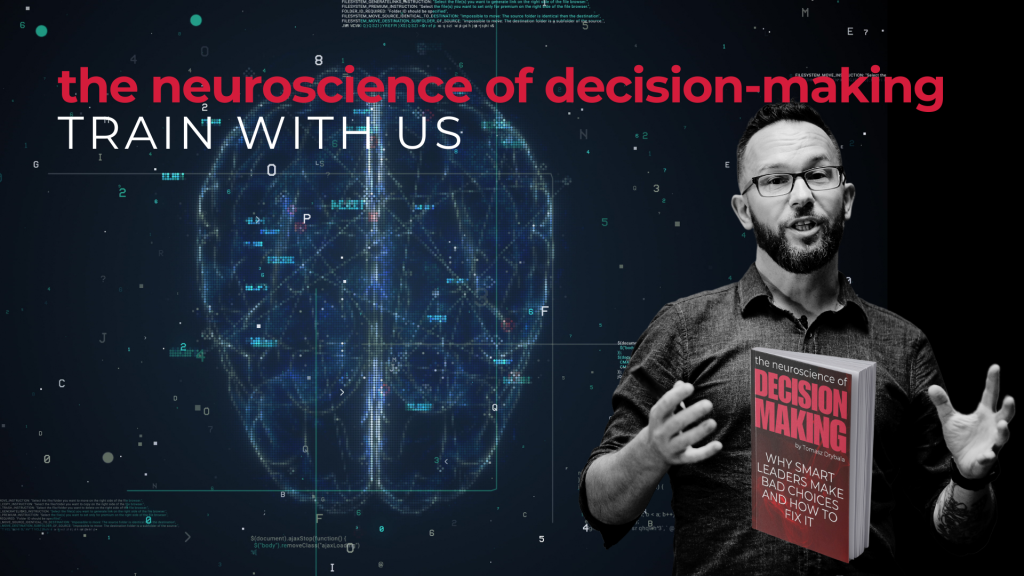In the realms of business and leadership, the ability to visualize outcomes and strategies effectively can be a game-changer. Visualization, or the process of creating mental images and scenarios, is not just a motivational tool; it’s grounded in science and has profound implications for improving performance. By leveraging insights from neuroscience, mindfulness, and cognitive psychology, leaders can enhance their decision-making, resilience, and overall effectiveness.
The Neuroscience of Visualization: Rewiring the Brain for Success
Neuroscience offers compelling evidence on how visualization can positively impact our brain and behaviour. When we visualize performing a task, our brain activates the same neural pathways as if we were physically executing the task. This phenomenon, known as “neuroplasticity,” refers to the brain’s ability to reorganize itself by forming new neural connections. Essentially, visualization can train the brain to develop skills and habits without physical practice.
For example, research has shown that athletes who regularly engage in visualization can improve their physical performance. The same principle applies to business leaders. By vividly imagining successful negotiations, presentations, or strategic decisions, leaders can prepare their brains for real-life challenges, reducing anxiety and enhancing their confidence.
Furthermore, visualization can enhance problem-solving abilities. When leaders visualize potential challenges and solutions, they engage their prefrontal cortex, the brain region responsible for planning and decision-making. This mental rehearsal helps create a cognitive framework that can be accessed during real-world situations, leading to more effective and timely decisions.
Mindfulness and Visualization: Cultivating Focus and Clarity
Mindfulness, the practice of being fully present and aware of the moment, complements visualization by enhancing focus and clarity. When combined, mindfulness and visualization can create a powerful synergy that boosts performance in business and leadership contexts.
Mindfulness helps leaders quiet the mental chatter and distractions that often cloud judgment. By fostering a state of mental calmness, leaders can visualize their goals and strategies with greater precision. This clear visualization helps align their actions with their intentions, leading to more coherent and purposeful decision-making.
Additionally, mindfulness strengthens the connection between the conscious and subconscious mind. When leaders visualize their goals in a mindful state, they are more likely to internalize these goals at a deeper level, making them more committed to achieving them. This process can lead to increased motivation, persistence, and resilience in the face of challenges.
Moreover, mindful visualization can reduce stress, a common obstacle in high-pressure business environments. By visualizing successful outcomes in a calm and focused state, leaders can decrease the physiological effects of stress, such as elevated cortisol levels, which can impair cognitive function and decision-making.
Cognitive Psychology: Visualization as a Tool for Behavioral Change
Cognitive psychology provides valuable insights into how visualization can be used to alter behaviour and improve performance. One of the key concepts in this field is the “self-fulfilling prophecy,” where our beliefs and expectations influence our actions and outcomes. Visualization can shape these beliefs, creating a positive feedback loop that drives success.
For instance, by regularly visualizing success, leaders can cultivate a “growth mindset,” a term coined by psychologist Carol Dweck. A growth mindset is the belief that abilities and intelligence can be developed through effort and learning. Visualization reinforces this mindset by mentally rehearsing scenarios where challenges are met with resilience and adaptability, rather than fear or avoidance.
Additionally, cognitive psychology emphasizes the importance of “mental contrasting,” a technique that involves visualizing both the desired outcome and the obstacles that might arise. This balanced approach helps leaders stay realistic and prepared, enhancing their problem-solving skills and reducing the likelihood of being blindsided by challenges.
Visualization can also improve leadership communication. By mentally rehearsing important conversations or presentations, leaders can refine their messaging, anticipate questions, and adapt their delivery to different audiences. This preparation can lead to more persuasive and impactful communication, which is essential for effective leadership.
Applying Visualization in Business and Leadership
Leaders can integrate visualization into their daily routines to maximize its benefits. Here are a few practical strategies:
- Daily Visualization Practice: Set aside a few minutes each day to visualize your goals, whether it’s a successful business outcome, a productive meeting, or a complex decision. Engage all your senses in this process to make the visualization as vivid as possible.
- Mindful Visualization: Combine mindfulness meditation with visualization. Begin by calming your mind through deep breathing or meditation, then visualize your desired outcome with a clear and focused mind. This practice can help reinforce your commitment to your goals.
- Scenario Planning: Use visualization to mentally rehearse different scenarios that might arise in your business or leadership role. Consider both positive and negative outcomes, and plan your responses accordingly. This mental preparation can boost your confidence and adaptability.
- Team Visualization: Encourage your team to engage in visualization exercises, especially before important projects or presentations. This collective practice can align the team’s goals and enhance collaboration and performance.
Conclusion: The Transformative Power of Visualization
The power of visualization extends far beyond simple daydreaming. Grounded in neuroscience, mindfulness, and cognitive psychology, visualization is a powerful tool for improving performance in business and leadership. By regularly practising visualization, leaders can rewire their brains for success, cultivate focus and clarity, and drive positive behavioural change.
In an increasingly complex and competitive business environment, the ability to visualize success and navigate challenges is a critical skill. Leaders who harness the power of visualization will find themselves better equipped to lead with confidence, resilience, and strategic insight, ultimately driving their organizations toward greater success.
Train with us: Neuro-Based Leadership Centre

